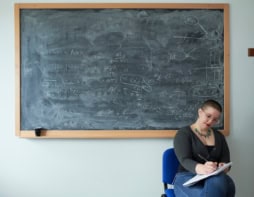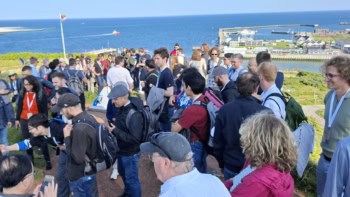By Hamish Johnston and Michael Banks
Physicists tend to drink lots of coffee so I wasn’t the least bit surprised to see the above video of Philip Moriarty explaining quantum mechanics using a vibrating cup of coffee. Moriarty, who is at the University of Nottingham, uses the coffee to explain the physics underlying his favourite image in physics. You will have to watch the video to find out which image that is, and there is more about the physics discussed in the video on Moriarty’s blog Symptoms of the Universe.
Former lorry driver Adrian Lane, 52, from Coleford, UK, got more than he bargained for when he attempted to make contact with the International Space Station (ISS). The amateur “ham” radio enthusiast plotted the ISS’s route and worked out a brief window during which it would be roughly 330 km overhead. He then sent out a call from his garden shed using his unique “sign” and to his astonishment a US astronaut answered back to “welcome him aboard”. With the ISS travelling at 29,000 km/h, it was only in range for four minutes, but the pair still managed to chat for around 50 s before they lost contact. They apparently discussed what it is like in space and what the Earth looked like. “The adrenaline was pumping a little bit,” Lane told the Telegraph. “I was buzzing. It’s not every day you get to talk to some guy out in space.”
Many of our readers are in the US and Canada and both of those countries are in the midst of election campaigns. To cheer up our North American neighbours, here is a list of 20 laws of political physics courtesy of Alexandra Petri of the Washington Post. My favourite is “Observer’s paradox: How you are doing in the polls will affect how you are doing in the polls”. I’d say quantum weirdness has nothing on political weirdness.
Unfortunately the gender pay gap remains stubbornly in place in science as it does in many other professions. Over on Motherboard, Becky Ferreira looks at how one female astronomer tackled this problem nearly 150 years ago. In 1870 the American astronomer Maria Mitchell discovered that she was being paid less than one third of what her male colleagues were receiving at Vassar College – which at the time was a women’s college. Ferreira takes up the story in “How a Victorian astronomer fought the gender pay gap, and won”.



